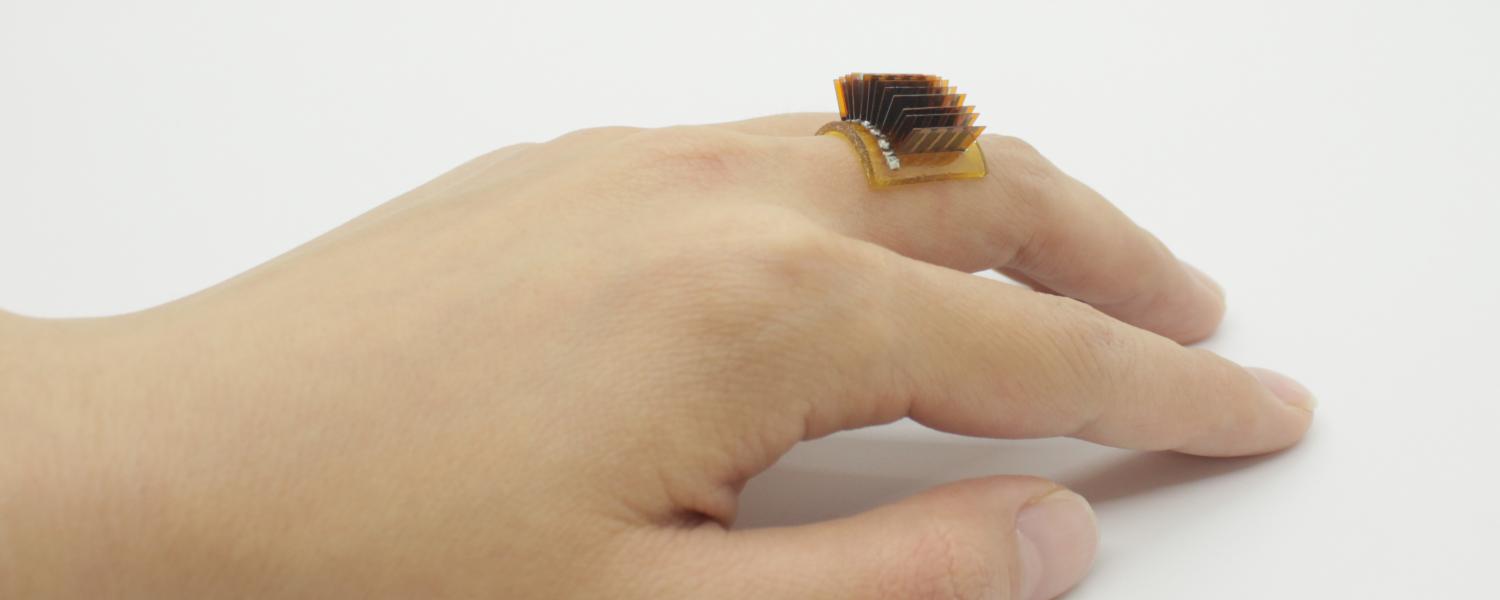Your body is the battery -- the future of wearables just revealed
The smartwatch of the future could be powered by your body heat

Scientists at the University of Colorado Boulder have made a huge breakthrough which could change the shape of wearable technology in the next 5 to 10 years. The researchers have developed a low-cost wearable that uses thermoelectric generators to draw power from the human body, as published in peer-reviewed journal Science Advances.
The proof of concept — the ring pictured above — uses a stretchy material called polyimine with a number of thermoelectric chips inserted into it, connected with liquid metal wires.
- The best smartwatches you can buy
- Best portable chargers and power banks now
- Plus: OnePlus 9 Pro leak reveals just revealed design, RAM and carriers
“Our design makes the whole system stretchable without introducing much strain to the thermoelectric material, which can be really brittle,” says senior author Jianliang Xiao. “The thermoelectric generators are in close contact with the human body, and they can use the heat that would normally be dissipated into the environment.”
The result is a device that can draw around one volt of energy for every square centimeter of skin space it takes up. The researchers estimate that a brisk walk with a fitness tracker sized device could generate around five volts — more than plenty of watch batteries manage today.
in addition to never needing to remember where you put your charger, the design has two other big benefits. First, it’s self healing — if you tear it, you can pinch together two broken ends and they’ll reseal within minutes. Second, it’s about as eco friendly as tech can be: if you want to dispose of the device, you can submerge it in a special solution which will dissolve the base while separating the electronics, which can then be reused.
“We’re trying to make our devices as cheap and reliable as possible, while also having as close to zero impact on the environment as possible,” explains Xiao.
Of course, there are a lot of hurdles to overcome, hence the 5 to 10-year timeframe cited by Xiao. But if the kinks are ironed out, this could be a game changer for wearable technology, where battery life is often the Achilles’ Heel.
Sign up to get the BEST of Tom's Guide direct to your inbox.
Get instant access to breaking news, the hottest reviews, great deals and helpful tips.
While a handful of wearable manufacturers have attempted designs to reduce our reliance on chargers, they’re not common by any means. The PowerWatch Series 2 uses a form of thermoelectric generation, but it’s let down by a high $499 price of entry and a design that’s definitely not for everyone. Likewise, the Garmin Instinct Solar draws power from the sun to offer an extra 54 days of battery life over the regular Garmin Instinct. But it costs $100 more, and merely delays the need for charging, rather than eliminating the need altogether.
If the Colorado Boulder researchers’ promise of a low-cost, small footprint solution are met, hopefully we can look forward to a day when wearable chargers are a distant memory. Just don’t expect the technology to be mature enough in time for the Apple Watch Series 7.
Freelance contributor Alan has been writing about tech for over a decade, covering phones, drones and everything in between. Previously Deputy Editor of tech site Alphr, his words are found all over the web and in the occasional magazine too. When not weighing up the pros and cons of the latest smartwatch, you'll probably find him tackling his ever-growing games backlog. Or, more likely, playing Spelunky for the millionth time.

